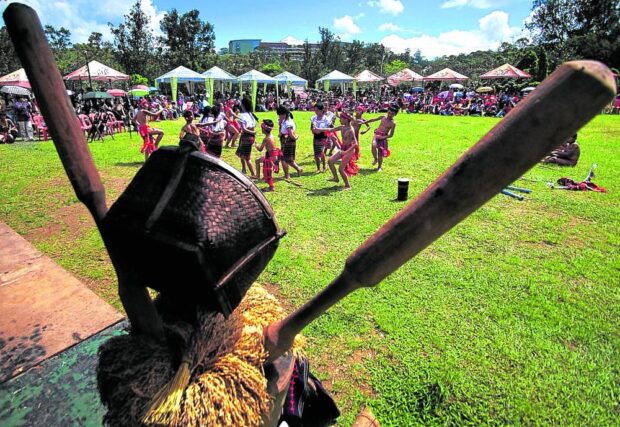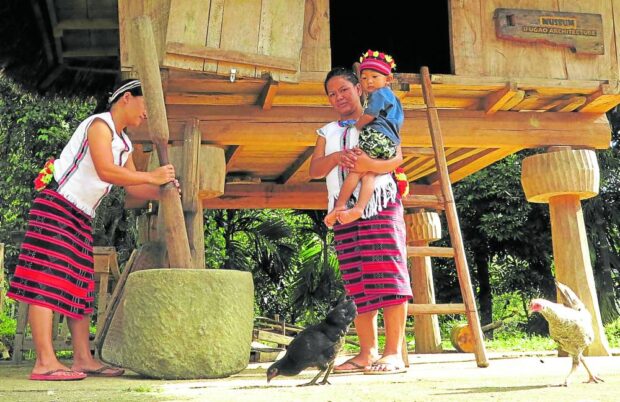Fewer births in Cordillera but teen pregnancy still high

EXPOSURE Young Cordillerans join their elders in a community festivity held at Burnham Park in Baguio City in this 2015 photo. The region’s elders ensure that their children will be exposed to
local traditions and practices to prepare them as future custodians of Cordillera culture and heritage. —RICHARD BALONGLONG
BAGUIO CITY — Cordillera families have been raising fewer children, which could lead to a declining population in this city and the rest of the region, an official of the Philippine Statistics Authority (PSA) said on Thursday.
Citing the results of the 2022 National Demographic and Health Survey, Jerry Santos, PSA Mountain Province chief statistical specialist, said the region’s fertility rate dropped to an average of 2.1 children per mother in 2022 from 2.5 children in 2017, 3.3 children in 2008 and 3.8 children in 2003. The fertility rate represents the average number of children born throughout the childbearing years of their mother.
According to the survey results, which were presented during a forum here, the country recorded the same fertility rate reduction from 2.7 children per Filipino family in 2017 to the average of 1.9 children per household in 2022.
The typical Cordillera mother prefers to have a total of three children, but young women who were surveyed appeared less inclined to have children, Santos said. The survey said 55.3 percent of women 15 to 49 years old had indicated they “want no more children.”
The drop in the number of Cordillera children meant the region had achieved its “replacement fertility rate,” said Cecile Basawil, acting Cordillera director of the Commission on Population and Development.
Article continues after this advertisementReplacement fertility is established when the number of a new generation is almost equal to the number of the previous generation representing their parents (with a ratio of 1:1), resulting in an outright reduction in population.
Article continues after this advertisement
LIFE IN THE MOUNTAINS In a tourism event in Ifugao province in 2016, members of an Ifugao family brief visitors about their way of life in their farming village. —EV ESPIRITU
Social emergency
Basawil described the replacement facility as a “positive development,” saying upland households would have sufficient resources to improve their lives and sustain their dependents.
But the rate of teenage pregnancies in the Cordillera also rose to 6.1 percent last year from 3.5 percent in 2017.
Teen pregnancies are collectively a public social emergency as of 2021, and the spike in the Cordillera should alarm communities, Basawil said. Local communities need to be “proactive” in addressing teen fertility, she said.
“The level(s) of education and wealth are still key variables for women with high fertility,” Basawil said.
Poorer households still tend to have more children compared to their educated and more affluent counterparts, the survey also showed.
There appears to be more trust in medical services among mothers in the region, 93 percent of whom delivered their babies at a health facility with the help of doctors and midwives, Basawil said. The remaining 7 percent of mothers who were polled gave birth at home.
Reproductive health
The study also showed that 42 percent of sexually active women who are 15 to 49 years old use modern contraception.
Betina Joy Bermillo, PSA Cordillera senior statistical specialist, said the study drew out the level of knowledge many Cordillera women have regarding health care and potential health risks.
For instance, 93.2 percent of women age 15 to 49 were aware of HIV/AIDS, although only 32.2 percent of younger women age 15 to 24 expressed knowledge about HIV prevention.
Police reports had described some teen pregnancies as the result of rape. But Bermillo said the study was not designed to link teen pregnancies and sex crimes.
The latest study showed a rise in sexual violence to 4.4 percent in 2022 from a low of 2 percent in 2017. It said 2.1 percent of women age 15 to 49 “experienced sexual violence committed by someone other than their husbands or intimate partners.”
Police Maj. Marcy Grace Marron, chief of the women and children protection desk of the Cordillera police, said cases of sexual violence had decreased from 254 in 2017 to 227 in 2022.
But the reports are no less gruesome, she said, with a 1-year-old child reflected as the youngest victim during that period.
READ: Duterte makes teenage pregnancy prevention a national priority